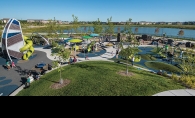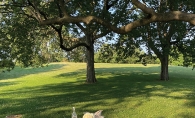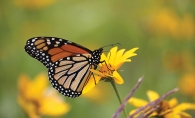Three species account for 55 percent of all trees in Maple Grove: maple, ash and spruce. Populations of an insect called emerald ash borer, commonly known as EAB, have killed more than 40 million ash trees nationwide. It has become the most destructive forest insect to ever invade North America. As of today, the emerald ash borer is within 8 miles of Maple Grove (in Plymouth).
Our ash trees are at high risk, because when the emerald ash borer visits, tree mortality rates approach 100 percent. So, what’s the big deal? New trees will grow back, right? Losing a substantial portion of mature trees diminishes property values and dramatically alters the appearance of neighborhoods. Also, a decaying tree poses an ongoing hazard to homes, vehicles and people. One half of a tree’s branches potentially die during the first year of EAB infestation. During the subsequent two to four years, they sustain ongoing decay until the tree is eventually dead.
Death of a part of the urban forest is expensive. A decrease in shade leads to longer running times for air conditioners. Dead tree removal can range from $150 up to $3,000, depending on the size of the tree. And, once new trees are planted, it will take at least a decade to regain a canopy in the city.
This may all seem dire, but a few very smart, forward-thinking people understood the coming devastation to our city’s landscape and began to take action five years ago. Frank Kampel and Marilyn Arnlund developed a volunteer-driven program called the Maple Grove Tree Inventory. They wanted to ensure that the community had a good understanding of the current condition of our urban forest to quantify the potential loss when EAB hits, leverage damage replacement funds, and be able to plan for smart reforestation.
So far, approximately 32,850 trees have been inventoried on 485 acres of public land by trained volunteers over the past three years as a part of this program. “Without the compassionate, dedicated and selfless unpaid volunteers…we would be lost in our efforts to manage our upcoming fight with the EAB,” Arnlund says.
Volunteers Sandy Winslow and Mike Koncar are top inventory volunteers; in 2015 alone they inventoried 5,209 trees. “We try to get out two mornings a week from 8:30 a.m. until 11 or 12,” Winslow says. “We have a software program we use to enter our data and pinpoint the exact location of each tree we examine. We identify and measure every tree (over a certain size) in every front yard. If it is a public tree (i.e. between sidewalk and street), we not only identify and measure, but we assess the structure of the tree and note 15 possible problems including asymmetry, girdling roots, cankers, cavities, rot, and more.” Winslow encourages people to give it a try. “The training is good …the hours are flexible and you can work as much as you like,” she says. “It’s a great activity—walking among trees for two to three hours on beautiful spring, summer and fall days.”
About EAB: (what to watch for) In North America, native ash trees have few defenses to resist the EAB beetle. Maple Grove residents can delay and minimize damage to area trees by not moving firewood far from its area of origin and by treating infected trees.
There are several indicators of EAB to watch for including major thinning in the top one-third of the trees canopy, sprouts of new growth below infested areas and, on trunk and roots, vertical cracks on the bark, serpentine markings and D-shaped exit holes.
Interested in joining the tree survey team? Visit maplegrovemn.gov or contact Marilyn Arnlund at 763.494.6094. Volunteers attend a training session and commit to inventory trees in a particular area. All equipment and supplies are provided.









